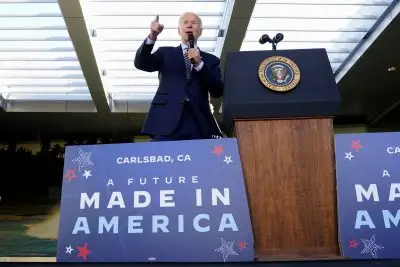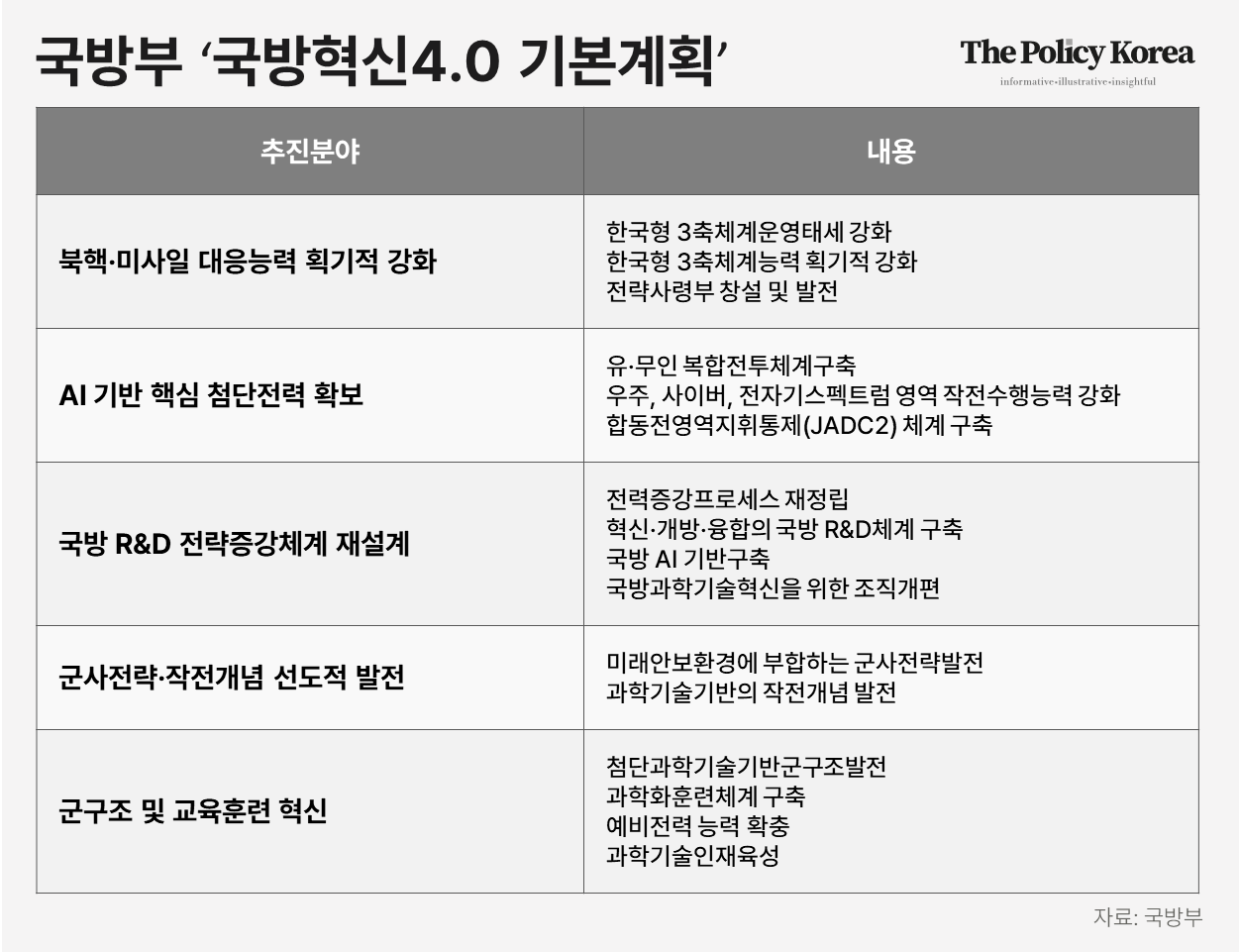[동아시아포럼] 미국 ‘칩스법’, 아시아 반도체 산업 퇴색위협
IRA 이어 칩스법까지, 점점 강화되는 미국의 '자국 보호주의' 다변화 조짐의 반도체 시장, 각국 반도체 업체들 한숨 유럽연합, 영국 등도 자국 보조금 프로그램 확장 및 출시
[동아시아포럼]은 EAST ASIA FORUM에서 전하는 동아시아 정책 동향을 담았습니다. EAST ASIA FORUM은 오스트레일리아 국립대학교(Australia National University) 크로퍼드 공공정책대학(Crawford School of Public Policy) 산하의 공공정책과 관련된 정치, 경제, 비즈니스, 법률, 안보, 국제관계에 대한 연구·분석 플랫폼입니다. 저희 폴리시코리아(The Policy Korea)와 영어 원문 공개 조건으로 콘텐츠 제휴가 진행 중입니다.
최근 미국의 자국 보호주의 정책이 강화되고 있다. 미국은 막대한 정부 자금, 거대한 내수 시장, 강력한 연구개발(R&D) 능력을 바탕으로 세계적 영향력을 행사하는 패권국가인 만큼, 자국 기술 표준과 공급망에 대한 요구 사항을 충족하지 않은 국가에는 언제든 무역 제재 등 불이익을 행사할 수 있어 아시아의 대미 무역 파트너국들은 불투명한 미래에 대해 우려하고 있다.

반도체 리쇼어링 진행 중인 미국
2022년 미국 의회에서 통과된 반도체 및 과학법(CHIPS and Science Act·이하 칩스법)은 미국의 리쇼어링(생산시설 국내 이전) 의도와 이를 통한 무역 파트너국에 미치는 영향을 잘 보여준다. 중국, 대만 등 동아시아로 집중된 반도체 생산의 지정학적 취약성을 극복하기 위해 마련된 칩스법은 미국 내 R&D 및 제조 촉진 보조금, 세제 감면, 기술 라이센스 보호 규정 등을 제공하는 것을 골자로 한다. 미국 내 반도체 제조 생산시설을 갖춘 기업에 대해 25% 세액 감면을 추가로 제공해 미국 내 반도체 시설 건립에 390억 달러(약 51조4,800억원)를 지원한 것이 대표적이다.
미국은 이를 통해 주요 반도체 제조업체와 공급업체들을 유치했다. 반도체산업협회에 따르면 2020년 칩스법 도입 이후 올해 6월까지 △연구 개발 △지적 재산 △칩 디자인 △반도체 제조 및 제조 장비 △반도체 칩 및 소재에 대한 67개의 새로운 프로젝트와 기존 미국 내 시설 확장 투자가 발표됐다. 이와 같은 움직임은 2000년 19%에서 2020년 12%까지 점진적으로 감소한 미국의 글로벌 반도체 제조 점유율과 상반되는 모양새다. 다만 아직 보조금 예산이 할당되지 않은 데다 일부 투자는 보조금과 무관하게 집행될 수 있는 만큼 칩스법의 영향력을 정확하게 평가하기는 어렵다.
칩스법, 글로벌 반도체 산업 퇴색 우려
하지만 일각에서는 칩스법이 전 세계 반도체 기업의 투자를 미국으로 유도해 글로벌 반도체 산업을 퇴색시킬 수 있다는 우려가 나온다. 그도 그럴 것이 2021년 전 세계 수출의 84%를 차지했던 동아시아는 세계 16개 반도체 수출업체 중 10개 업체와 상위 6개 업체 공급업체가 분포해 있는 반도체 산업의 전초기지다. 칩스법은 이러한 지역 집중 현상에 대한 대응으로 탄생한 만큼, 이에 따른 미국의 반도체 생산 능력 확대는 동아시아에 대부분 의존하고 있는 기존 반도체 시장에 큰 영향을 미칠 것이라는 분석이다.
실제로 업계에서는 각국의 강도 높은 정부 개입으로 반도체 과잉 생산과 전 세계 반도체 가격 하락 가능성이 점쳐지고 있다. 기존 아시아 지역의 공장들은 장기간에 걸친 확장을 통해 대규모 생산 시설을 확보한 데다, 생산 수율 향상까지 진행한 데 반해, 칩스법에 의해 새롭게 지어질 공장은 생산 규모나, 수율 면에서 불리해 반도체 생산 비용도 더 높을 수밖에 없다. 그럼에도 불구하고 수입 관세를 높이거나 자국 내 생산 요건을 갖춘 기업에만 보조금을 부여하는 식으로 가격 경쟁력을 높이고 있는 만큼 반도체 가격 하락은 피해갈 수 없다는 것이다. 이런 현상은 지난해 8월 인플레이션 감축법(IRA)이 시행됐을 당시 전기차 산업에서 그대로 나타났다. IRA로 인해 미국에서 제조된 전기차를 구입하는 소비자만 보조금을 지원받게 되면서 완성차 업체들의 가격 경쟁이 치열해진 것이다. 이와 같은 보조금 경쟁은 수출 시장을 제한하고 가격 하락을 부추겨 종국적으로는 대미 무역 파트너국들에 큰 위협이 된다.
또한 미국은 자국 내 반도체 산업 촉진 전략과 함께 반도체 공급망에서 중국을 배제하려는 움직임을 보이고 있어 파트너국들의 우려가 한층 더 깊어지고 있다. 현재까지 미국이 중국 배제에 대해 직접 언급한 바는 없으나, 칩스법에는 중국의 제조 시설에 대한 신규 투자 중지 조건이 포함돼 있는 만큼, 중국을 견제하기 위한 의도가 명백히 드러난다. 하지만 반도체 생산에 있어 중국이 월등한 비중을 차지하고 있다는 점에서 미국의 중국 배제 조치는 산업 전반에 작지 않은 파장을 일으킬 것으로 예상된다. 이를 미국 내 반도체 생산으로 대체한다고 하더라도 여전히 다른 국가에서의 레거시(범용) 반도체 수입이 필요한 상황이기 때문이다.
칩스법에 대응, 자국 보호 전략 발표한 무역 파트너 국가들
이런 가운데 유럽연합(EU), 한국, 대만, 일본 등은 칩스법에 대응해 자국의 보조금 프로그램을 확장·출시하고 있다. 지난해 EU가 반도체 공장에 대한 정부 자금 규정을 완화하기 위해 제정한 유럽반도체법(European Chips Act)이 대표적이다. 유럽반도체법에 따라 지난 8월 대만의 반도체 제조 회사는 독일에 최대 55억 달러(약 7조2,000억원)에 이르는 정부 보조금을 포함, 110억 달러 규모(약 14조5,200억원)의 반도체 제조 공장 건설 계획을 발표하기도 했다. 영국도 미국과 EU의 대규모 보조금에 대응해 자국 반도체 산업에 중점을 둔 20년 전략을 수립했다.
국제기구 차원에서의 노력도 이어지는 중이다. 인도-태평양 경제 프레임워크(IPEF)는 공급망 협의회를 신설하며 격화되는 반도체 보조금 경쟁을 완화하고 대미 무역 파트너국들이 미국 산업으로 확장할 수 있는 방안에 대한 지속적인 논의를 이어가고 있다. 지난 9월 발표된 협정문에 따르면 회원국 간 개방 무역은 유지하되 중복 분야로 인한 상호 경쟁은 피하고, 공급망을 점진적으로 개선하기 위해 협력할 예정이다. 또한 각국 핵심 분야 및 주요 상품 위주의 협력을 진행하고 수급 다변화로 인한 공급망 위기에 협력해 대응할 방침이다.
원문의 저자는 피터슨 국제경제연구소(Peterson Institute for International Economics, PIIE)의 메리 엘리자베스 러블리(Mary E Lovely) 선임연구원입니다.

US CHIPS Act threatens to hollow out Asian semiconductor industry
Even as they share similar concerns about economic security and resilience, the United States’ trading partners in Asia wonder what Washington’s new embrace of industrial policy means for their own development.

With deep government pockets, a large domestic market and potent research and development capabilities, the United States has the economic power to capture a significant share of global investment in targeted industrial sectors. The US turn towards protectionism and its desire to shift trade to ‘like-minded’ friends raise fears that the US market will be closed to Asian exports unless US demands for common standards and supply chain configurations are met.
The CHIPS and Science Act, passed by the US Congress in 2022, illustrates Washington’s ‘reshoring’ intentions and their implications for trading partners. The act is designed to ‘bring back’ domestic semiconductor manufacturing that is presently concentrated in Asia by offering a menu of subsidies, tax credits and domestic content rules that promote onshore research, development and manufacturing. Bipartisan support for the funding comes from the centrality of semiconductors to civilian and military technology and concerns over the geopolitical vulnerability caused by fabrication that has moved to mainland China and Taiwan.
The CHIPS Act subsidises onshore investment in semiconductor fabrication, promising US$39 billion of manufacturing incentives on top of 25 per cent investment tax credits. These incentives seem to already be attracting the major semiconductor fabricators and their suppliers to invest in the United States.
According to the Semiconductor Industry Association, from the CHIPS Act’s introduction in 2020 to June 2023, 67 new projects and expansions of existing US facilities were announced in research and development, intellectual property, chip design, semiconductor fabrication and manufacturing equipment, supplies and materials. This new activity contrasts with the steady decline in the US share of global semiconductor manufacturing, which fell from 19 per cent in 2000 to only 12 per cent in 2020.
Assessing how many of these projects have been attracted to the United States because of CHIPS Act subsidies is difficult. The allocation of these funds has not occurred yet and some of these investments might have been made regardless. But US export controls on advanced chips and the equipment and supplies needed to produce them have undoubtedly affected decisions within the industry because they limit the materials that can be sent to China for manufacturing.
The CHIPS Act explicitly pulls investment from global semiconductor companies to the United States, raising fears that US industrial subsidies will hollow out tech industries in other regions. East and Southeast Asia is home to 10 of the 16 semiconductor exporters and the top six suppliers, accounting for 84 per cent of global exports in 2021.
While US subsidies are clearly a response to this regional concentration, expanding production capacity in the United States will affect the markets that these exporters now serve. On the one hand, US chip-related activities may reduce US chip imports from some Asian suppliers. But they may also expand trade in materials, equipment and more labour-intensive activities, such as testing and packaging.
How the industry and the market for Asian semiconductor-related exporters evolve in the future also depends on the actions of other countries. In response to the CHIPS Act, the European Union, Taiwan, Japan and South Korea have initiated or extended subsidy programs of their own.
In 2022 the EU launched the European Chips Act to ease government funding rules for semiconductor plants. In August 2023, the Taiwan Semiconductor Manufacturing Company announced plans to build a US$11 billion chip manufacturing plant in Germany, in a deal that reportedly includes up to US$5.5 billion in government subsidies. The United Kingdom also announced a 20-year strategy for its domestic semiconductor industry, recognising its inability to compete with massive US and EU subsidies and focusing on areas where it already has competencies.
This high level of intervention in the industry raises the spectre of a coming glut of semiconductors and falling world prices, even as the cost of production by new players is expected to exceed those in more established locations. If such a scenario plays out, governments will be tempted to protect subsidised manufacturers behind import tariffs or offer customer subsidies conditioned on domestic content requirements.
The US turn to such restrictions is evident in the Inflation Reduction Act, passed in August 2022, which provides subsidies to purchasers of electric vehicles assembled in the United States. The threat to Asian suppliers is clear if the subsidy race blocks semiconductor export markets and lowers world prices.
Another concern for Asian suppliers may arise from US demands to reduce Chinese involvement in supply chains. To date, Washington has not made such demands directly, but the CHIPS Act’s investment tax credits are contingent on recipients refraining from significant new investments in manufacturing facilities in China. This indicates that the United States intends to reduce links to the Chinese industry.
The implications of such ambitions are unclear. Silicon is produced by a handful of countries, but the largest supplier by far is China. Pressure to find alternative sources will be a problem throughout the industry. Even if the United States completely removes China from the supply chains that serve domestic chip manufacturers, it will still rely on imports of legacy chips from foreign partners.
Through ongoing consultations, facilitated in part by the Indo-Pacific Economic Framework’s new Supply Chain Council, Asian exporters may be able to moderate negative spillovers from the emerging semiconductor subsidy race and open up space for their participation in the expanding US industry. The Council, envisioned to meet at least annually, is tasked with exploring options to diversify concentrated supply sources for sectors and goods of shared interest. Member countries could work to avoid duplication, maintain open trade among members and gradually modify critical material sourcing.



























